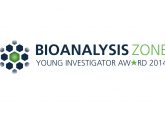2014 Young Investigator Finalist: Peter Nemes


Nominee:
Nominated By:
Supporting Comments:
What made you choose a career in bioanalysis?
Understanding mechanisms that govern states of health and disease is critical to developing next-generation treatments, but this largely depends on the bioanalytical toolset that is available to these investigations. At an early career, I recognized the central position that the bioanalytical field fulfills toward this goal. I strategically selected bioanalysis as a career because I knew that the systematic and thorough approaches that are undertaken in this field would promote innovating technologies, provide answers to leading challenges in health research, and move science forward at a basic level.
Describe the main highlights of your bioanalytical research, and its importance to the bioanalytical community.
My research focuses on developing next-generation bioanalytical platforms to enhance basic and applied research. I have been fortunate to introduce notable innovations, and three are discussed here. 1) As a PhD student, I co-invented laser ablation electrospray ionization mass spectrometry, LAESI, a novel MS technology for high-throughput and in vivo analyses of metabolites, peptides, and proteins and their imaging in two- and three-dimensions in tissues. The bioanalytical industry commercialized LAESI, and the industrialized product, DP-1000, was released for the US and European markets last year.Bioanalysis recognized LAESI in the News and Analysis section in 2010, and LAESI received the 2012 North American Frost&Sullivan, Pittcon 2012 Editors’ Bronze Award, 2012 R&D Top-100-Innovations, and the Scientist Magazine 2011 Top-10-Innovation awards. 2) As a postdoctorate Scientist, I developed single-cell capillary electrophoresis MS and measured the metabolome of individual identified neurons. This work received the 2010 Science and Technology Innovation award from Baxter Healthcare Corporation. 3) As a laboratory leader at the US FDA, I introduced pyrolysis DART MS, making screening of the notorious contaminated heparin 100-fold faster. The work received FDA’s 2013 Special Recognition Award. As an Assistant Professor of Chemistry, I am currently developing new bioanalytical advances for volume-limited samples including single cells.
Describe the most difficult challenge you have encountered in the laboratory and how you overcame it.
The most difficult challenge I have faced has not been technological, fundamental, or application-oriented, but rather the establishment of an actual laboratory and related research program. Upon joining the US FDA as a PI, I was provided an empty laboratory with no power, water, or furniture. By developing a strategic plan, managing time, dedicating specific subtasks to employees/students, and preparing successful proposals that aligned with the Agency’s mission, I managed to not only outfit the laboratory, but also to begin a research program that then enabled me to secure further funding to create a Mass Spectrometry Core Facility, perhaps the largest development in the Division’s history that I worked for. Being an Assistant Professor at present, the challenges are no smaller. While a similar approach to tackle challenges regarding establishment of the laboratory, research, and extramural funding could work again, I realize that developing skills as a teacher, mentor, and advisor is pivotal to a successful bioanalytical career in academia. I particularly enjoy the exceptional complexity of academic research and the research liberty that comes with it because the fast pace, dynamic environment, and motivating colleagues provide a fruitful environment to advance bioanalysis to the next level.
Where do you see your career in bioanalysis taking you?
My career goal is to continue innovating bioanalytical technologies and using them to facilitate translational research. I am particularly interested in enabling investigations on volume-limited samples because to advance basic biology and to address leading concerns in public health such as the onset and development of diseases, bioanalysis must be taken to ever-decreasing dimensions. My goal is to adapt MS to volume-limited samples, specifically single cells and subcellular organelles, which contain about a million times less volume than traditionally measured in this field. To this end, I am establishing a research group and research program that introduces next-generation microsampling, microscale separations, and novel types of ionization sources to improve the limits of MS detection. We utilize these platforms to measure cell heterogeneity and the metabolomic and proteomic regulation under states of health and disease for their importance to the onset of disease. The data from these studies are used to illuminate biochemical pathways that are affected by a specific condition, thus helping to accelerate the development of new regiments. I am committed to training new scientists in bioanalysis to promote the advancement of the field to the next dimension and use existing technologies to facilitate translational research.
How do you envisage the field of bioanalysis evolving in the future?
Looking at the future of bioanalysis, I anticipate closer alignment between disciplines to expedite translational research. Contemporary investigations aim at understanding basic biochemical processes, and this goal requires ever-increasing spatial and temporal resolution as well as broader coverage of the molecular organization. Correspondingly, we need, perhaps more than ever, bioanalytics that are more sensitive, selective, reproducible, robust, easy to use, and capable of operation in situ, preferably in vivo. Furthermore, to achieve better confidence when working biological samples, which carry inherent variability, advanced statistical analyses are needed. We increase the throughput of measurements so that repeated experiments can be performed on a given system or in a selected state, providing more data for statistical evaluation with higher confidence. Clearly, these advances call for the integration of different traditional disciplines including but not limited to analytical chemistry, biology, engineering, physics, and mathematics. As it is becoming increasingly difficult to master these fields, we have a responsibility to foster a new generation of bioanalysts that have advanced skills in solving problems and finding the right type of information to aid in the process. Because our workflows are inherently systematic and thorough, I believe that our field, bioanalysis, is particularly well positioned to advance translational research.
Please list 5 of your recent publications, and select one that best highlights your career to date in the field of bioanalysis.
1. Nemes P, Hoover WJ, Keire DA. Rapid differentiation of heparin from other glycosaminoglycans by pyrolysis mass spectrometry, Anal. Chem. 85, 7405–7412 (2013).
2. Nemes P, Rubakhin SS, Aerts J, Sweedler JV. Qualitative and quantitative metabolomic investigation of single neurons by capillary electrophoresis electrospray ionization mass spectrometry, Nat. Prot. 8, 783–799 (2013).
3. Nemes P, Vertes A. Ambient mass spectrometry for in vivo local analysis and in situ molecular tissue imaging, TrAC-Trends in Analytical Chemistry 34, 22–34 (2012).
4. Rubakhin SS, Romanova EV, Nemes P, Sweedler JV. Profiling metabolites and peptides in single cells. Nat. Methods 8, S20–S29 (2011).
5. Nemes P, Vertes A. Laser ablation electrospray ionization for atmospheric pressure, in vivo, and imaging mass spectrometry. Anal. Chem. 79, 8098–8106 (2007).
First choice: Nemes P, Rubakhin SS, Aerts J, Sweedler JV. Qualitative and quantitative metabolomic investigation of single neurons by capillary electrophoresis electrospray ionization mass spectrometry, Nat. Prot. 8, 783–799 (2013).
Reasoning: Nat. Prot. 2013 well describes my career in bioanalysis because it demonstrates innovation in bioanalysis and the application this invention to address an actual challenge in basic research, the characterization of the building block of life, the cell. By enabling metabolomic-proteomic analyses on single neurons in the central nervous system, it raised a powerful opportunity to characterize cell heterogeneity in the brain or measure other volume-limited samples to ask new types of questions in health and disease research.



